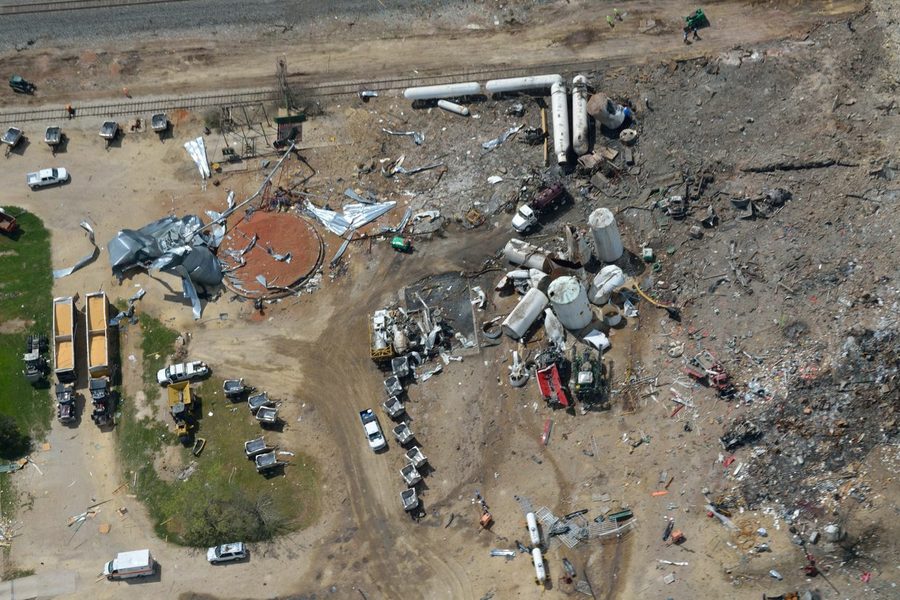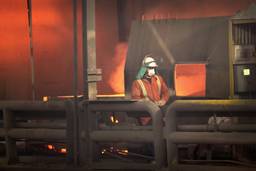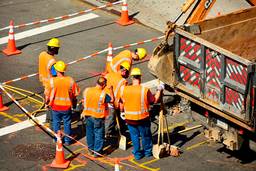West Blast Obliterates Safety Lie
The West, Texas disaster proves lax regulations endanger both workers and communities.
Leo Gerard, United Steelworkers President

You are not safe. Not at work. Not at home in your bed. The biggest threat is not terrorism. It’s corporate negligence leading to a blast or collapse or release of toxic chemicals.
Terrorism killed 3,000 Americans on 9/11. But in the dozen years since then, terrorists on American soil have taken the lives of fewer than 25, including those at the Boston Marathon and Fort Hood. By contrast, every year, more than 4,000 perish in American workplaces. These deaths are commemorated every April 28 on Workers Memorial Day. It’s every April 28 because workplace fatalities are relentless.
The explosion earlier this month at the fertilizer plant in West, Texas, that killed 11 first responders and three town residents is a warning to community members that they too may fall victim to workplace dangers. That massive blast should shake Americans out of the delusion that careful corporations and vigilant regulators keep them safe. They don’t. Industry won’t improve safety unless forced. And regulators can’t begin to adequately compel them until properly fanged and funded.
Between the deaths in Boston and West, my union, the United Steelworkers (USW), issued a report on the threat posed to workers and communities by a highly toxic chemical widely used in oil refining. The report is called “A Risk Too Great.” That’s because no industrial process endangers more lives from a single accident than alkylation with deadly hydrogen fluoride (HF).
It’s used by 50 refineries across the country, each storing an average of 212,000 pounds. That endangers 26 million Americans.
Six years ago, at the CITGO refinery in Corpus Christi, Texas, two workers were injured, one critically, when a failure caused a hydrocarbon and HF release, followed by an explosion and fires that burned for days. According to an investigation by the U.S. Chemical Safety Board (CSB), approximately 42,000 pounds of HF was released. Of that, the CSB estimated, 4,000 pounds likely escaped into the atmosphere. Luckily, it blew into an unpopulated area.
At the 23 refineries surveyed by the USW, there were 131 HF releases or near misses over a five year period. That includes one in 2009 at the Sunoco refinery in Philadelphia in which a 22-pound release sent 13 workers to hospitals and one in which a 54-year-old worker died in 2012 after he was exposed to a mixture of HF and propane at the Valero Energy Corp. refinery in Memphis.
The USW has warned about HF for years, but the response from industry is, basically, “Don’t worry, be happy.” OSHA, the CSB and other federal and state agencies lack the regulatory teeth and the funding to effectively respond to the threat.
The fertilizer plant explosion in West is another example of regulatory feebleness. Because of the inherent weakness of self-reporting requirements and because of inadequate funding for OSHA, federal officials were virtually unaware of the dangers at the plant.
After the 9-11 attacks, Congress mandated that any entity with 400 pounds of the explosive fertilizer ammonium nitrite report to Homeland Security. This may be because home-grown terrorist Timothy McVeigh used 4,000 pounds of it to blow up the federal building in Oklahoma City in 1995, killing 168. Or maybe it was the nation’s worst industrial catastrophe, in which a ship loaded with ammonium nitrate docked at the Port of Texas City in 1947 caught fire, exploded and killed nearly 600 people.
Either way, the owner of the West fertilizer plant never reported to Homeland Security that it routinely stored 540,000 pounds of ammonium nitrate next to a school, playground, apartment building and nursing home in the town of 2,800. So, of course, Homeland Security didn’t know.
Long before 9-11 or Oklahoma City, long before the current owner bought the fertilizer plant, OSHA inspected it in 1985. OSHA didn’t return in the ensuing 28 years. But that’s not surprising considering OSHA has so few inspectors that it would take 131 years for it to examine every American workplace one time.
The West plant did submit a risk management plan to the EPA because it kept 54,000 pounds of another hazardous fertilizer, anhydrous ammonia, which could kill large numbers of people if leaked. In its most recent plan, the plant reported no risk of fire or explosion, saying the most serious threat was a 10-minute release of anhydrous ammonia.
The underfunded and overworked CSB, which has only 20 investigators nationwide, recommended in 2002 that the EPA require reporting of hazardous materials like ammonium nitrate. But agriculture and fertilizer lobbyists opposed that, and the anti-regulation Bush administration took no action.
Over the years, the plant in West vented anhydrous ammonia in violation of its permits and moved tanks without informing authorities as required, but encountered only finger wagging and minor sanctions from state regulators in Texas which boasts of its anti-regulatory regime.
Corporations aren’t moral entities. They won’t follow safety rules unless forced.
That’s the problem in Bangladesh. No one enforces safety at the country’s garment factories sewing clothes for U.S. and other Western retailers. A fire at the Tazreen factory in Dhaka in December killed 112 workers who found exit doors locked. Collapse of a factory building in Dhaka last week killed more than 350 and injured 1,000. It occurred after police ordered evacuation, but factory bosses threatened to dock the pay of garment workers who didn’t return.
Whether it’s deadly HF wafting into an unsuspecting community, an ammonium nitrate explosion taking out a nursing home or hundreds of other risks posed by industry to communities and workers, corporations aren’t going to voluntarily limit dangers. The history of deaths shows government must force them. Wimpy regulations and fund-starved inspectors can’t do that.







